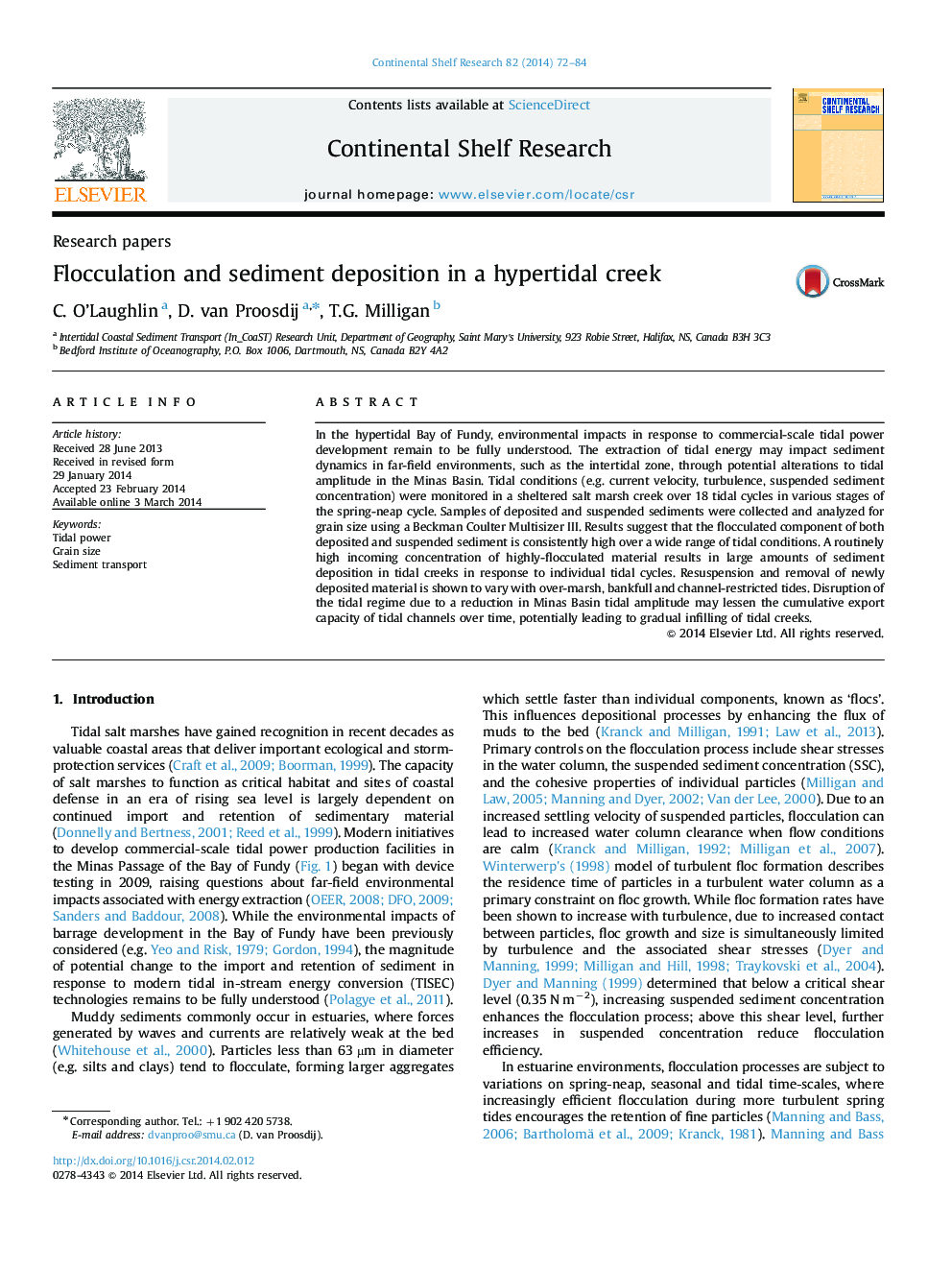| Article ID | Journal | Published Year | Pages | File Type |
|---|---|---|---|---|
| 4531918 | Continental Shelf Research | 2014 | 13 Pages |
•The long-term effects of tidal power development on intertidal areas are generally unknown.•It is hypothesized that the response of fine sediment in the intertidal zone will be non-linear.•Tidal conditions were monitored in a hypertidal salt marsh creek over the spring-neap cycle.•Large amounts of highly flocculated material is imported and deposited during one tidal cycle.•A reduction in tidal amplitude may impact the export capacity of creeks and cause infilling.
In the hypertidal Bay of Fundy, environmental impacts in response to commercial-scale tidal power development remain to be fully understood. The extraction of tidal energy may impact sediment dynamics in far-field environments, such as the intertidal zone, through potential alterations to tidal amplitude in the Minas Basin. Tidal conditions (e.g. current velocity, turbulence, suspended sediment concentration) were monitored in a sheltered salt marsh creek over 18 tidal cycles in various stages of the spring-neap cycle. Samples of deposited and suspended sediments were collected and analyzed for grain size using a Beckman Coulter Multisizer III. Results suggest that the flocculated component of both deposited and suspended sediment is consistently high over a wide range of tidal conditions. A routinely high incoming concentration of highly-flocculated material results in large amounts of sediment deposition in tidal creeks in response to individual tidal cycles. Resuspension and removal of newly deposited material is shown to vary with over-marsh, bankfull and channel-restricted tides. Disruption of the tidal regime due to a reduction in Minas Basin tidal amplitude may lessen the cumulative export capacity of tidal channels over time, potentially leading to gradual infilling of tidal creeks.
